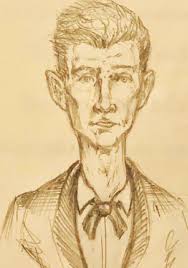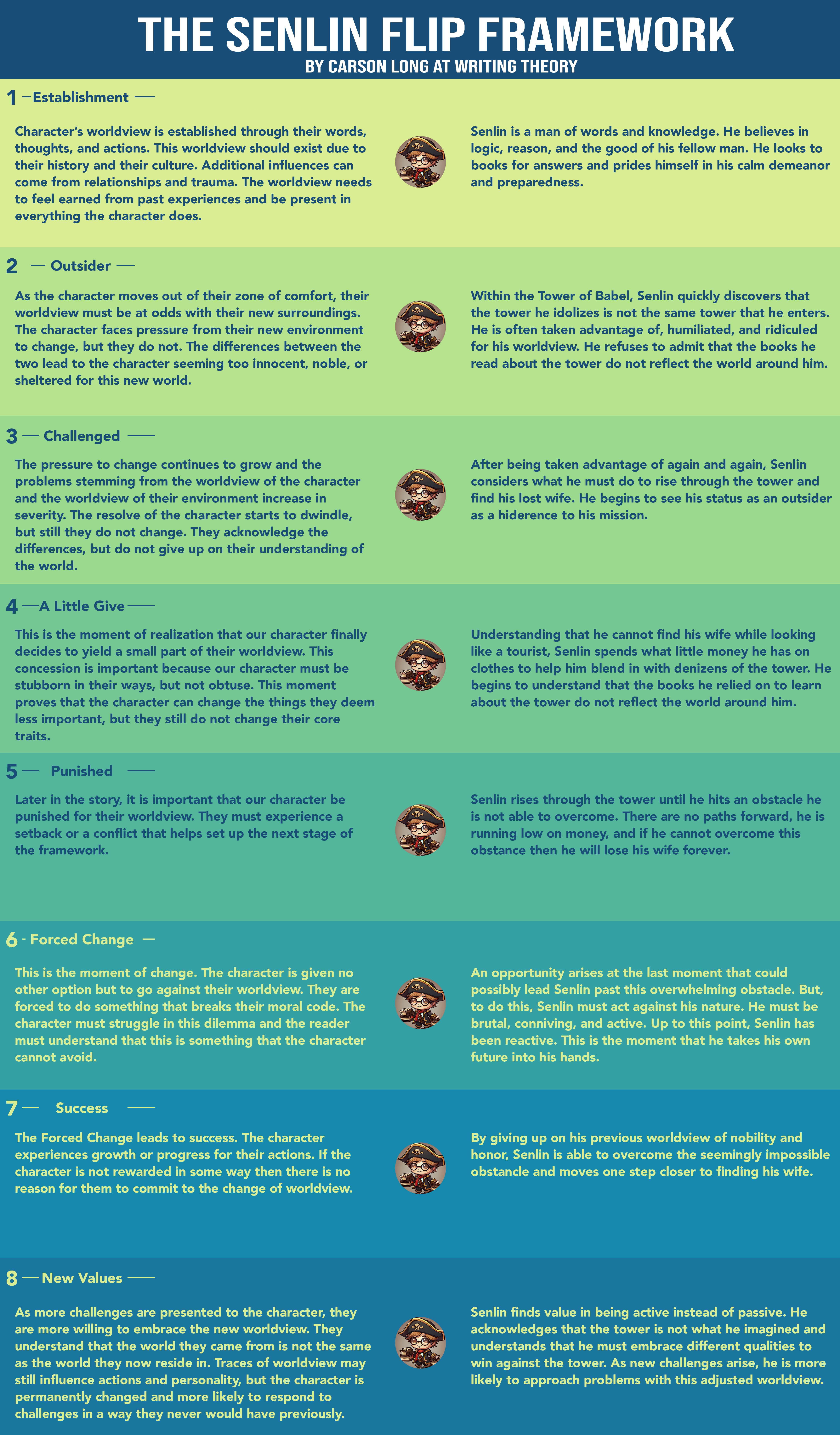Senlin Ascends by Josiah Bancroft is a great read. It’s also known as the indie darling of the fantasy genre that broke free of the self-publishing world and into the traditional publishing market. This means that you can now find these beautiful books throughout many bookstores all around the world!
Senlin Ascends follows Thomas Senlin and his wife Marya as the newlywed couple leave their fishing village and travel to the mysterious and enigmatic Tower of Babel for their honeymoon. The tower is enormous with countless levels. Those who live outside the tower have no idea how many floors the tower holds. Those born in those floors high above the clouds never visit to the dusty surface of the world, creating a clear divide where neither party understands the other part of the world.
Each floor of the tower, or Ringdom, is completely different. Since the tower is so large, each Ringdom operates as it’s own country with different rules, cultures, purposes, designs, and more.
Senlin has read about the tower his entire life. He is a learned and knowledgeable man working as the headmaster of the sleepy school in their fishing village. He prides himself on academic knowledge, studiousness, logic, and reasoning. And, in his reading about the tower, he believes that the tower is home to many people like him. In his mind, it’s become his mecca of noble knowledge. It’s one of the main reasons he wants to visit the tower.
Soon after arriving to the Tower of Babel, walking through the market surrounding the base of the tower, Senlin and Marya get separated. Thus begins Senlin’s journey to find his wife. This journey takes him into the tower and up the different floors.
The book is a fun read that borders of surrealism and whimsy at times and is then contrasted with grim and dark violence that shocks you out of your dream-like stupor.
The thing that Senlin Ascends does best is not the worldbuilding (which is more than acceptable), but it’s Character Flip of Thomas Senlin.
What is a Character Flip
The Character Flip is my name for change your character undergoes within your novel. It’s the differences between the character at the start of the book and at the end of the book. A great character flip takes a character that we love and relate to at the beginning of the novel and forces them to change in a way that the reader believes. A character flip should feel earned, difficult, and unavoidable.
Senlin Ascends provides a great series of beats that we can apply to our own writing to build a character flip.

The Framework
Below is the full-sized framework that I put together. Feel free to download it if you need! Scroll further down for a short breakdown of each step of the framework.

Establishment
No character should undergo a character flip without a strong foundation of their character. Establishment is the process of rooting your character in their worldview. Why do they believe the things that they believe? Why are they so sheltered, noble, naive, softhearted, or shy? What has happened in their past to establish these traits and how do they show themselves through the action, thoughts, and words of your character?
Answering these questions may not be done in one single chapter at the beginning of your book. It may take multiple chapters and interactions for these qualities to feel real and rooted in the character. Spend time establishing the base of this character so that the character flip feels that much more impactful.
Outsider
The Character Flip is done by putting a character into conflict with the world around them. The Outsider stage of the framework establishes this conflict. The character’s worldview must be at odds with those around them. In the case of Senlin, he is a man of thoughts, knowledge, and reason. He relies on those qualities and expects the same in the people around him. When the people around him do know share those same qualities, conflict arises in the way that they act versus the way that Senlin acts.
Being an Outsider means a couple different things. First, your character should feel estranged with those around them. They should not be able to easily connect with others who do not share their worldview. Second, your character should stand out. It may be through physical means, like wearing clothes that are not part of the culture around them, or through non-physical means like what Senlin experiences.
Challenged
Your character should be challenged by the world around them to change. This pressure of being an outsider should grow (or at least be unyielding). It’s also important that the character acknowledge the differences in the world around them, but not be inclined to change yet. Doing so would make their worldview feel fickle and weak. A worldview is built over an entire lifetime, it won’t be changed by spending one week in a place that you feel like you don’t belong.
A Little Give
After being challenged for a certain amount of time, it is important that your character make concessions. Specifically, the reader needs to know that the character understands the differences in their worldview and the world around them. To not acknowledge this may lead your reader to think your character is unobservant or obtuse. We need them to know that any refusal to yield to the world around them is intentional.
This section of the framework tells the reader that our character sees the importance in changing some things. Senlin acquires new clothes to better fit in to the world of the tower. It is a small compromise, but it shows his steps of blending in. He doesn’t want to be an outsider, so this is one step to finding a middle ground.
However, the character doesn’t yield their important traits. Senlin won’t give up his reasonable and logical approach to problems at this stage. But he will change his clothes so that he doesn’t stand out as much.
Punished
Later in the story, your character must be punished for their worldview. In the case of Senlin, this punishment comes in the form of being unable to progress further to find his wife. He hits a brick wall. He has exhausted all of his options and cannot find a way forward.
This punishment doesn’t need to be a physical one, but it should serve as some kind of barrier between the character and something that they want.
Forced Change
Forced Change is the moment of the story where the character is given no other option but to go against their worldview. They have to break their own rules in order to move the plot along. In the case of Thomas Senlin, he is given an opportunity to move closer to finding his wife but it requires him to go against his noble and reasonable intentions.
The critical thing here is the Forced change. The character must be given no other choice but to do this. They’ve exhausted every other option and now they must go against their worldview. This part is important because it serves as an internal conflict of the character. It’s also a satisfying reading experience because of all the groundwork we’ve laid before this moment. The reader, at this point, knows how important it is for the character to hold on to their worldview. Which means that they understand how impactful it is for the character to be forced through these options.
Success
The character must be rewarded for this change. To not be rewarded, or to be punished, would simply reinforce the idea that going against their ordinary worldview was a mistake and they shouldn’t do it again. The forced change put them through a moral dilemma and the success of the change means that the character is more likely to go against their original worldview in future challenges.
Senlin breaks his worldview in order to move pass an impassable hurdle. This puts him in a spot that he never would have been able to reach otherwise. As future challenges arise, Senlin more easily considers acting in this new way.
New Values
Repeated breaking of the worldview makes the character’s values shift. Senlin no longer believes that he must be logical and reasonable. The tower around him has proven to him that, in order to progress through the tower, you have to be selfish and rougish. You have to lie and cheat and steal and look out for yourself. You cannot trust those around you until they earn that trust.
This character at the end of Senlin Ascends is a drastically different person that the Thomas Senlin we met at the beginning.
If you want to study this Character Flip in more detail, consider reading the book! Purchase the book through this link to support the channel.
